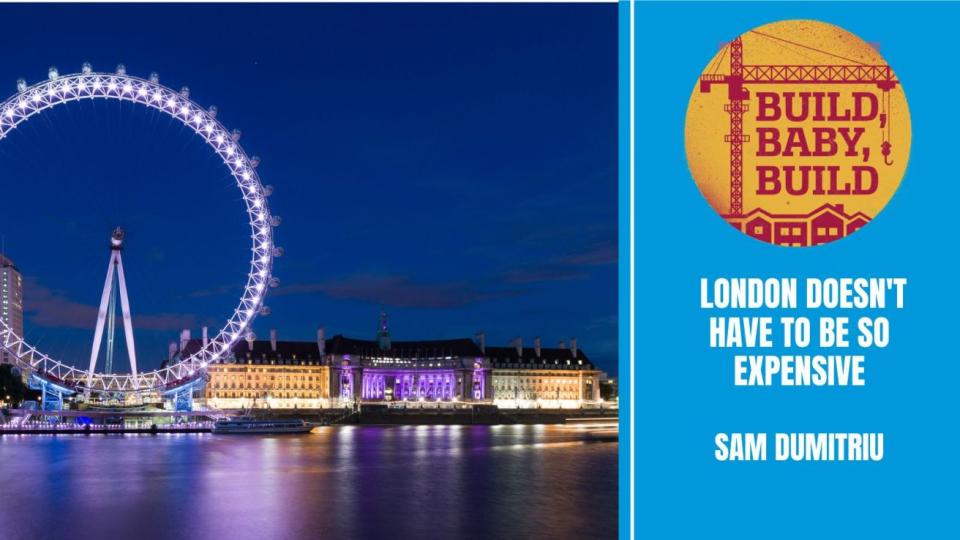Build, Baby, Build: London doesn’t have to be so expensive

London built the world’s first underground railway and the beautiful, beloved mansion blocks of Chelsea and Marylebone. We can do it again, says Sam Dumitriu
Rents in London are now so high that a one bed in the capital will set you back more than a three bedroom will in any other region of England. And what do Londoners get for those sky-high rents? Less space than ever before. In fact, the amount of floorspace per person in London has fallen for renters from 30sq m in 1996 to 25sq m in 2018.
Rents are unaffordable for a simple reason: we haven’t built enough homes to meet rising demand. Since the 90s, London has seen jobs surge by almost two-thirds, while its population has grown by 2m. Housebuilding simply hasn’t kept pace. For every 10 jobs London has added over the last decade, only three new homes have been built.
London used to build. Our image of the 1930s is coloured by America’s Great Depression, but Britain’s economy bounced back much faster due to a building boom. London alone added 61,500 homes per year – almost all of them built by the private sector. But, London hasn’t built more than 50,000 homes in any year since.
What changed? In short, we brought in a planning system that bans all new development unless the housebuilder has explicit permission from the local authority. Before the 1947 Town and Country Planning Act, almost all building in London was allowed unless it exceeded a clearly set-out height limit. A height limit, by the way, which permitted the much-loved eight-storey mansion blocks of Marylebone and Chelsea.
Housebuilding isn’t the only thing we’ve got worse at either. The Metropolitan Line was the world’s first underground railway. Parts of the Northern Line were the first to run electric trains underground. Yet, today London is one of the most expensive cities in the world to build new underground railways. In fact, it costs around twice as much to build new underground railways in London as it does in France and Italy, three times as much as in Germany and six times as much as in Spain. If we could bring down costs to the levels seen in major European cities, we could not only build Crossrail 2 but also Crossrail 3, 4, and 5.
London’s failure to build is not just bad for Londoners who have to contend with crowded commutes and expensive housing, it’s bad for Britain and the planet too.
Bad for Britain because high rents price workers out of our highest paying and most entrepreneurial city, leaving us with a weaker economy and less money for public services.
Bad for the planet for two reasons. First, because decades of underbuilding have left London with some of the oldest (and therefore hardest to decarbonise) housing stock. Second, because London’s got the country’s most extensive public transport network. A London that built more would mean more people living in warm modern homes near reliable local transport.
It doesn’t have to be like this. London should adopt tried-and-tested reforms to make it easier to build at higher densities near tube and train stations. Subject to strict design codes, small housebuilders should be set free to build up to six storey mansion blocks near fast transport links by right. When Auckland adopted similar reforms, it cut rents by a third. That’d be a £6,000 saving for a family renting the average two-bed.
London used to build (a lot), but decades of restrictive planning rules have created a massive backlog. That needs to change. It’s time for London to build again.
Sam Dumitriu is head of policy at Britain Remade

 Yahoo Finance
Yahoo Finance 